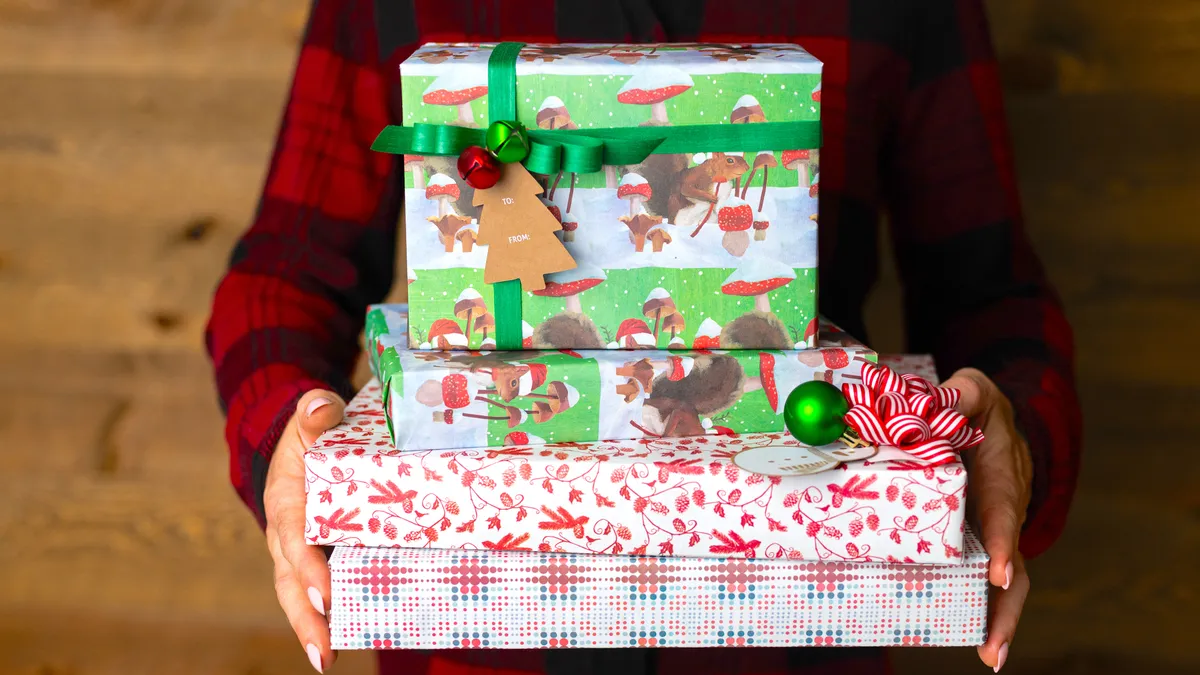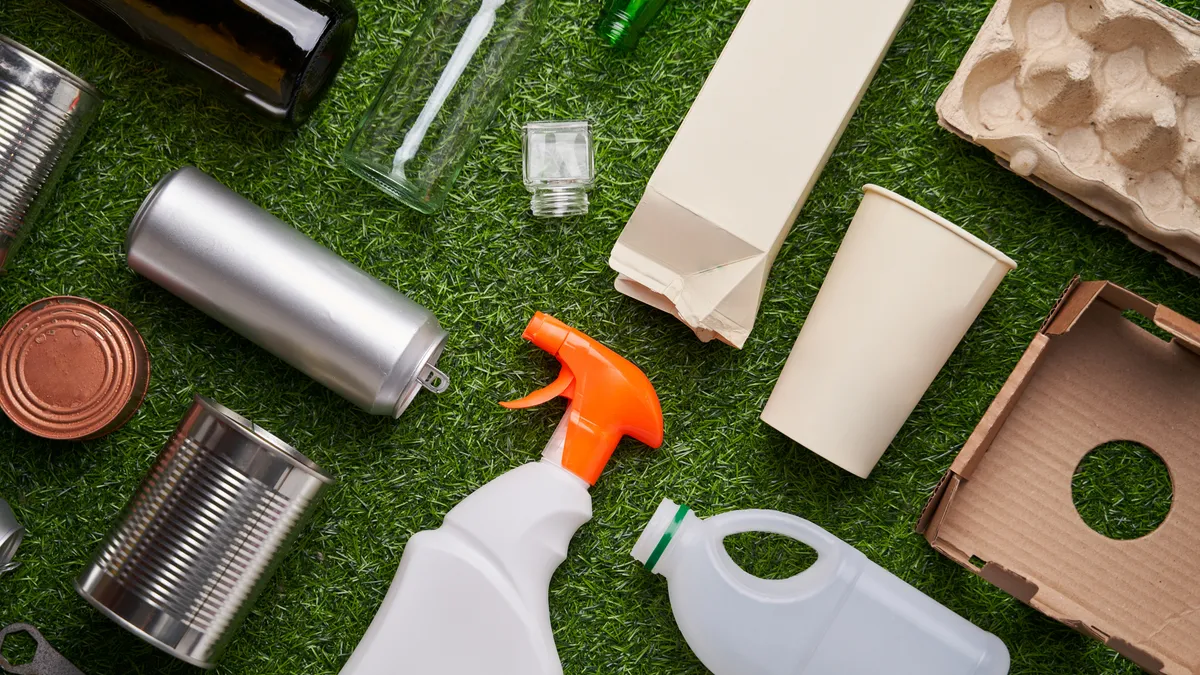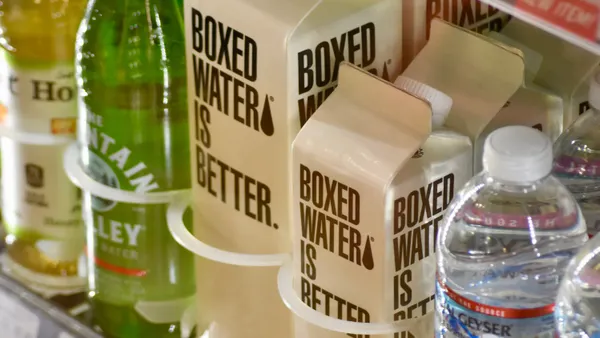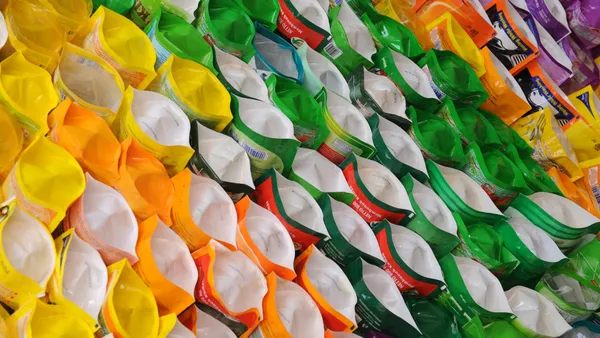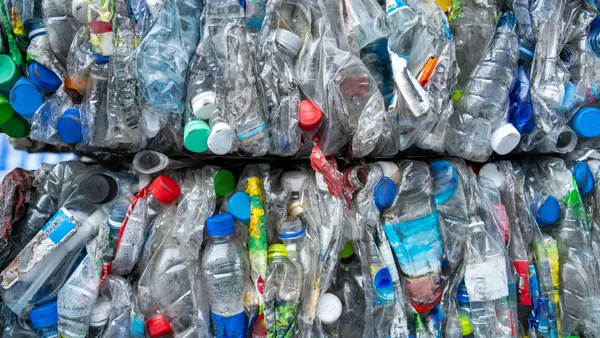Packaging companies and gift wrap brands are working to provide more sustainable solutions, such as wrapping options made with recycled content or biobased materials, while also educating consumers about the nuances of recycling.
Consumers are increasingly shopping online — meaning more shipping boxes and mailers — and they often use large amounts of gift wrap during the holiday season. More often than not, holiday packaging and gift wrapping involves single-use materials.
“When you think about Christmastime and the holidays you think of shiny metallic wrapping paper,” said Mark Beamesderfer, packaging services director for the Americas at Metsä Board, a Finnish paperboard producer. “A lot of that stuff isn't sustainable.”
Beamesderfer noted that while holiday gift wrap might be made of paper, it’s often coated with plastic to obtain a glittery or glossy finish that also makes it harder to recycle.
The American Forest & Paper Association recommends that consumers do a scrunch test to check for recyclability.
“If you can scrunch it up and it stays in a relatively tight ball, then that means that paper is paper and it's going to generally be recyclable,” said Terry Webber, vice president of industry affairs at AF&PA. “If you scrunch it up and it expands, then there's probably metal or plastic or something else in there.”
Most satin-like finishes seen on bows are made of polyester. Glitter on wrapping paper, gift bags, bows and tags also poses another issue as it can be a contributor of microplastics in the environment.
“I’m always on the lookout and talking to manufacturers for biodegradable or compostable materials,” said Sara Smith, founder of Hawai’i-based Wrappily, a brand that sells printed gift paper made of recycled newsprint and wrapping materials such as natural cotton ribbon or hemp twine.
After attending weddings and baby showers in 2013, Smith was appalled at all the wrapping paper being thrown out. She attempted to salvage some by taking it to local recycling centers and decided to launch her own company. Smith had the idea to add colorful designs from small artists on recyclable wrapping options.
“If we just put nice patterns on a newspaper press then we could print it locally, it could be recycled with newspapers. It would be a simple circular situation,” she said, noting that newsprint is widely recyclable.
Other packaging companies are creating sustainable options for boxes and bags, as these items can be tricky to recycle depending on how they’re made.
Houston-based Creative Retail Packaging offers custom packaging solutions for mid-to-large-sized businesses in the restaurant, retail and e-commerce sectors. Recently, it made a gift box for children’s retailer OshKosh B’gosh. The box features a one-piece folding design with precut tissue paper and a pre-tied ribbon to keep the cost and waste low.
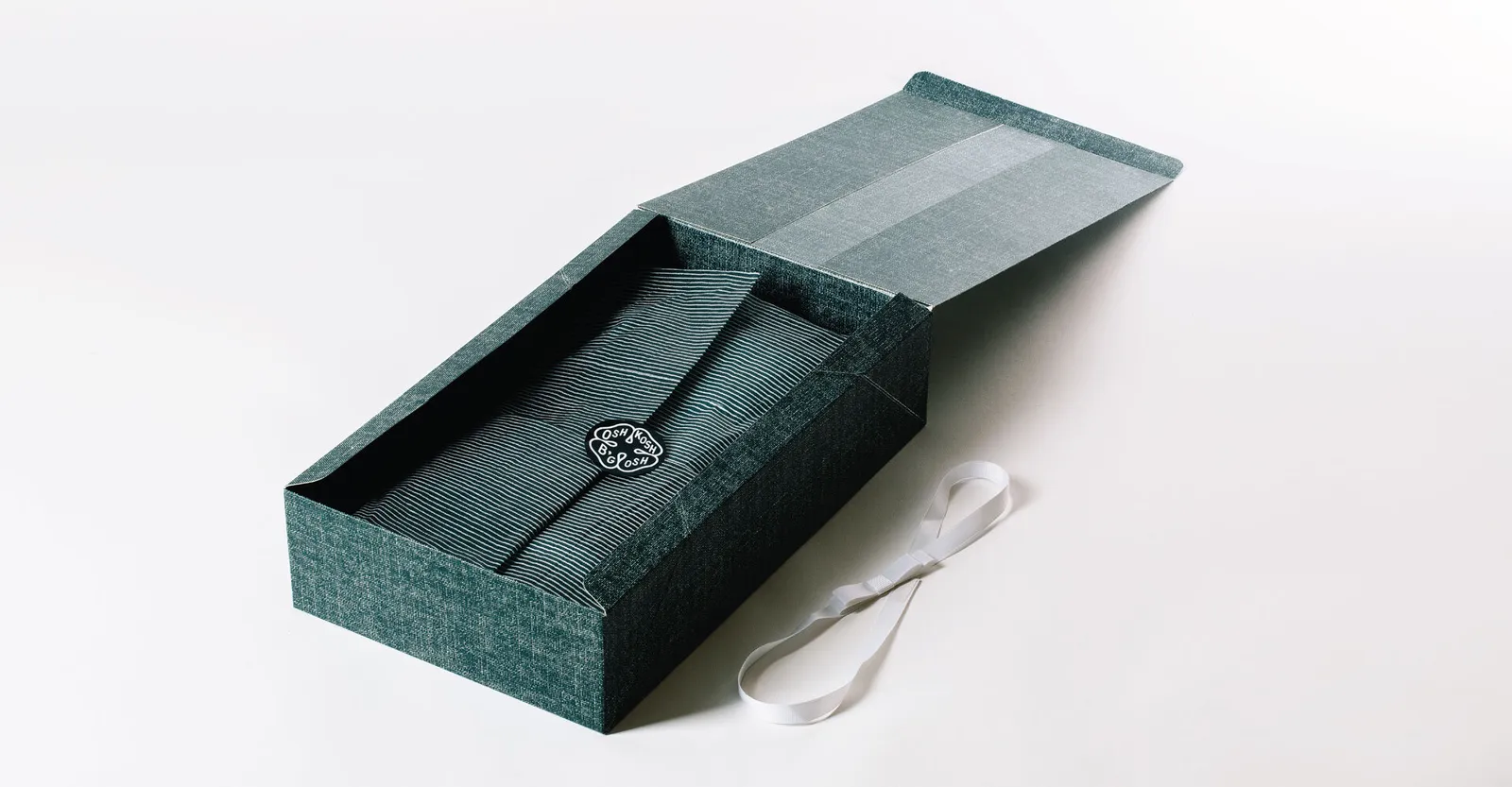
“If you think of ways to reduce weight, you're also reducing your shipping costs,” said CRP Executive Vice President Kristen Van Veen.
Van Veen emphasized that another option is choosing to customize stock items. She said that adding small elements like stickers or decals to existing packaging is ultimately more affordable and sustainable than creating an entirely new product.
“Something that I think is an unsung hero in the sustainability world is the amount of creativity you can use with embellishments on your packaging,” said Van Veen.
AF&PA’s Webber noted that brands are also opting for more flexible packaging such as paper mailers and recycled paperboard in their products.
Metsä Board’s micro-fluted box made with recycled paperboard is another example. Microfluting allows the box to be one layer and lighter than a traditional corrugated box. Compared to its rigid counterparts, the box touts a 59% lower carbon footprint. Thus far, the micro-fluted box has been used for a honey brand but is also considered ideal for beauty and confectionery products. The company also noted that it’s important for lightweight boxes to still be sturdy.
“The most sustainable packaging is that which protects the product inside,” said Nate Pajka, Metsä Board’s sustainability manager.
Using alternative materials is yet another way to ensure packaging is sustainable, said Saloni Doshi, CEO of custom packaging and shipping company EcoEnclose.
EcoEnclose recently partnered with Sway to use seaweed films for retail boxes that are made with a base of recycled paperboard. The film is used to create clear windows in gift packaging, which are traditionally made of plastic. Such films are often embedded in gift boxes to display the product, making the box more difficult to recycle.

Seaweed has a lower carbon footprint and EcoEnclose said the films can be accepted in curbside recycling because the window is “screened out during the paper repulping process.” Doshi said the company is now testing out the material with smaller brands before implementing it across larger clients.
“Large brands are how you as a business grow, but the small brands are what allows us to bring innovation into market,” she explained.
Metsä Board and Creative Retail Packaging are also using polylactic acid, a compostable bioplastic derived from sugarcane, to resolve the plastic window issue.
“There's things that we can do as designers to make that window very easily removable so that when it comes time to put that into the trash or into the recycling stream, it’s easy to separate,” said Beamesderfer.
PLA still poses challenges, due its higher cost and recyclability limitations, but the companies said it’s better than the alternative. Beamsederfer sees more and more brands using it in the future as the price comes down.
“Not only are we going to see more responsible packaging being put out there, but I also think that we're going to see many more innovations in materials coming as a result,” he said.
This shift toward new and different gift packaging is only expected to continue. Large and small retailers have pledged to reach various sustainability targets within their supply chains, and in the U.S. four states have begun implementing extended producer responsibility laws for packaging. This will make companies cover costs for managing their packaging at the end of its life, which in many cases also charges more for less recyclable designs.
Packaging companies also said that consumers will play an important role with purchasing and recycling choices.
“As a consumer, I try to remind myself it might be cheap for me, but somewhere along the line somebody or somewhere is paying,” Smith said.


